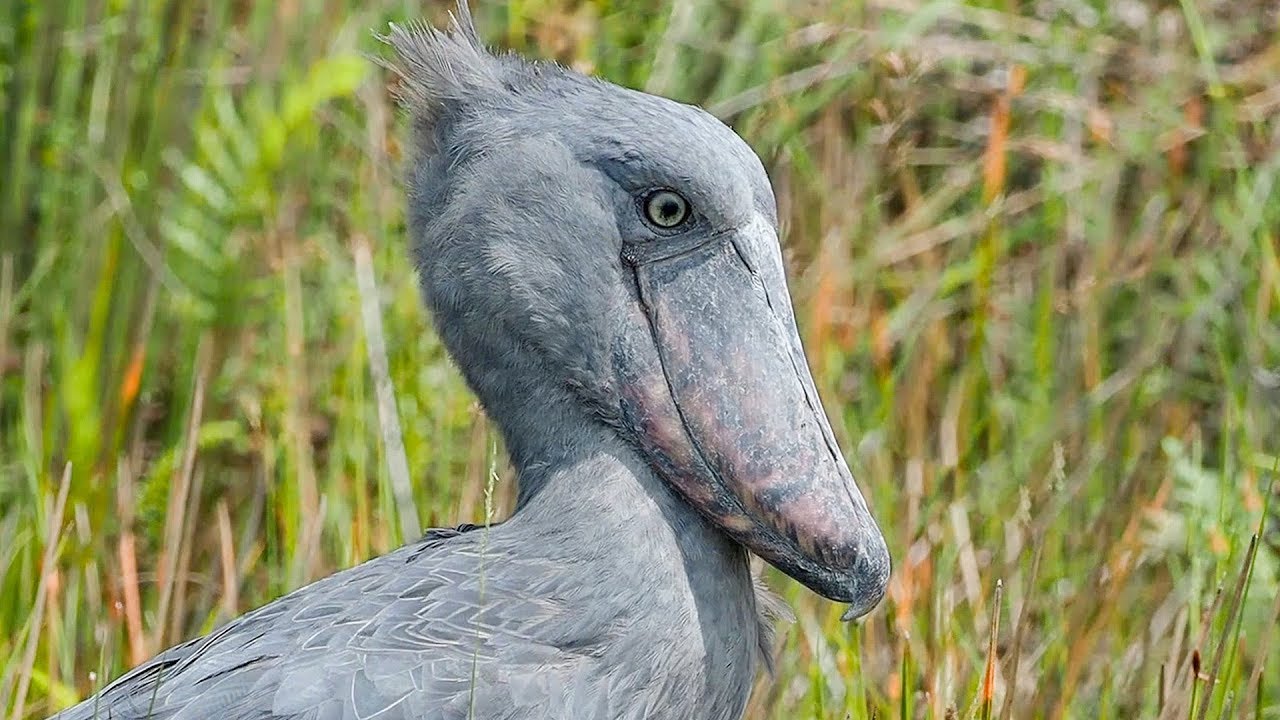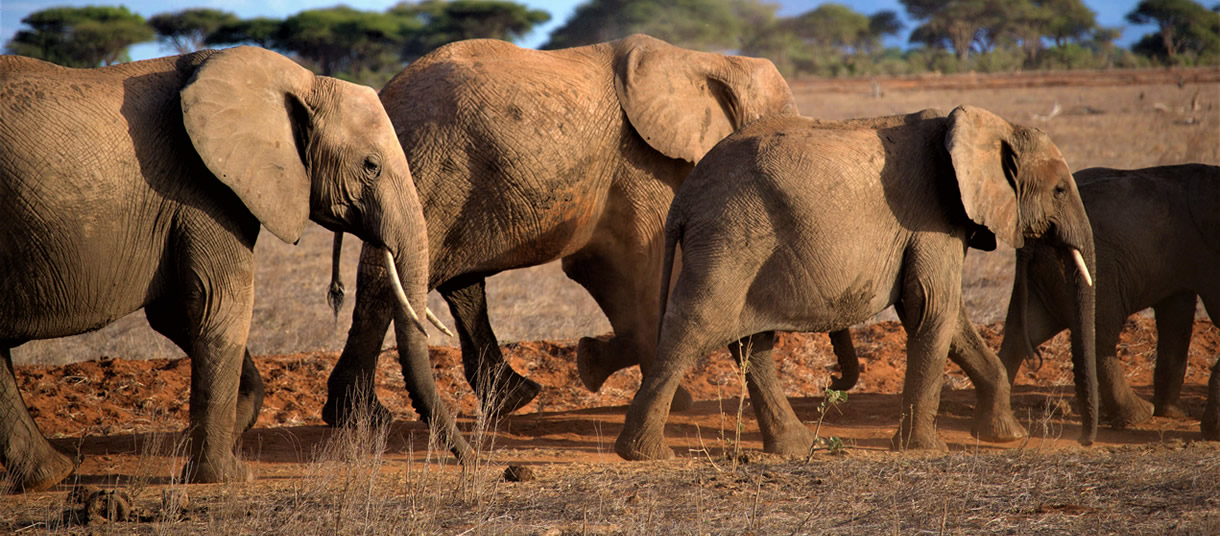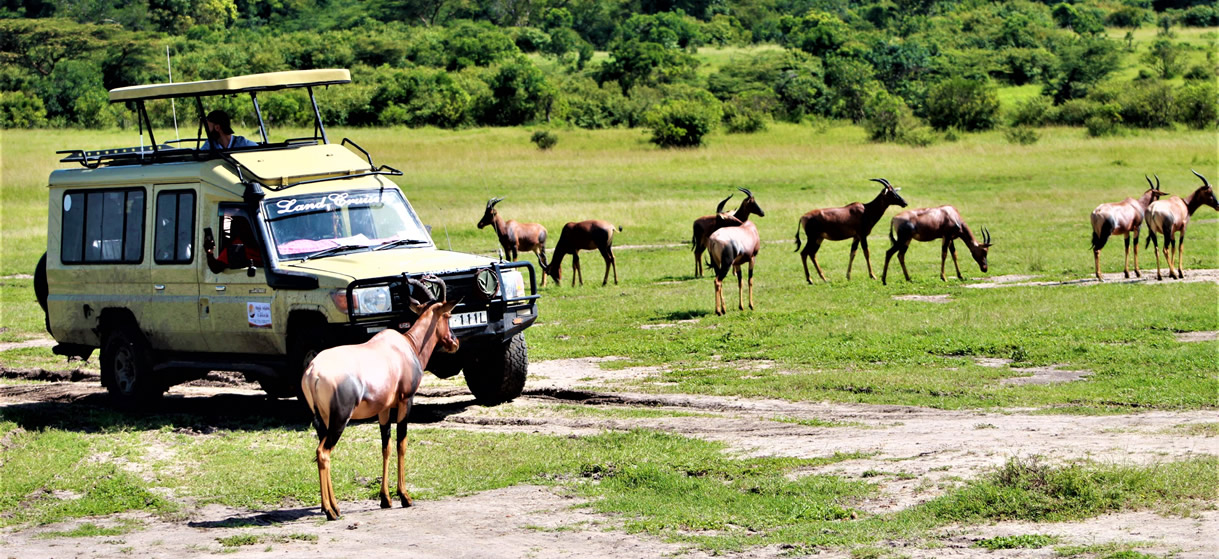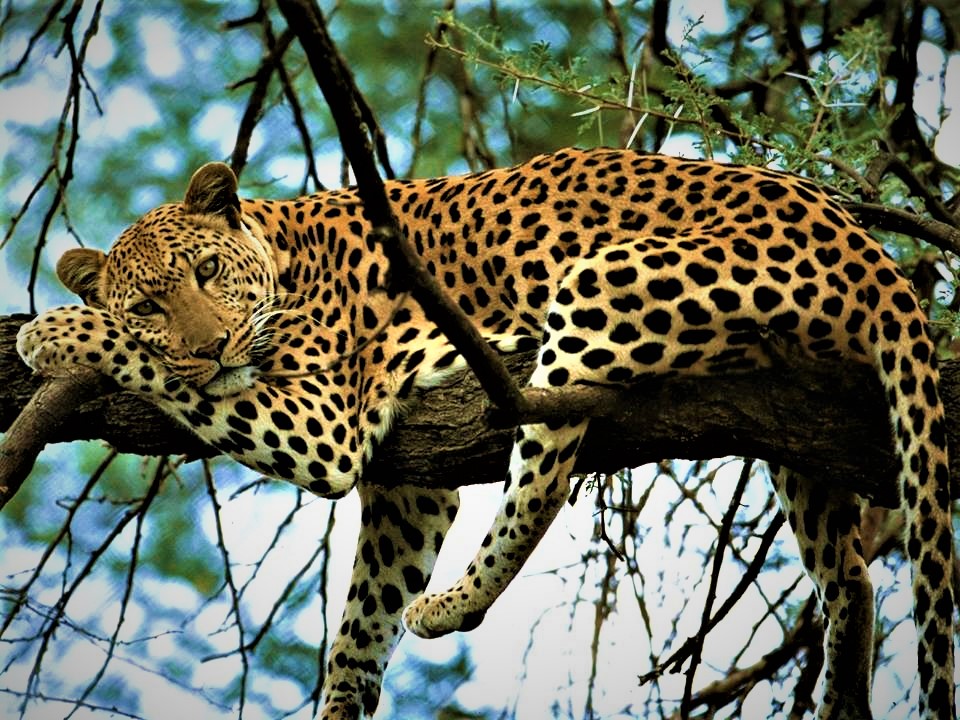Uganda is just one of more than 20 countries that are part of the African continent. It occupies a land area of 235,000 square kilometers which has more than 1008 species of birds. This figure represents more than half of the type of bird species found in Africa making it the best place to be should you desire to go on a bird watching vacation. There are a lot of places to go bird watching in Uganda. You can take your pick from over 700 forest reserves.
One example is the Albertine Rift Endemic Area that boasts to have 38 species of birds. The birds here can also be seen in Burundi, Congo and Rwanda. Because the government wants to protect these animals, they have setup 24 similar areas that are located in the forests of Mgahinga and Bwindi National Park in the southwest.
Apart from the forests, there are also the wetlands. Uganda has 30,000 square kilometers of wetlands and not less than 210 bird species are present at all times. You might to see the Shoebill, the African Skimmer, the Papyrus Gonolek, White Winged Warbler or the White Winged Black Tern.
Best National Parks Where to Go Birding in Uganda
Of the many national parks in Uganda, the most famous are Queen Elizabeth, Murchison Falls, Bwindi Impenetrable, Semuliki Forest and Kibale Forest.
The Queen Elizabeth National park has one of the highest biodiversity ratings of any game reserve in the world. Aside from the 606 bird species that roam this are, the park is also home to over 100 mammal species.
Murchison Fall National Park is situated by the Murchison Waterfalls nearby. The wildlife in this area has drastically improved from the poaching done during the 1980’s so you are sure to see several species of birds, elephants, buffaloes, giraffes and antelopes.
The Bwindi Impenetrable National Park is home to 90 mammal species which includes 11 primates. There are about 23 bird species which still ranks among the highest in Uganda.
Semuliki National Park is one of the newest in Uganda. It lies on the border with Congo. Because of the changes that happened during the Pleistocene era, it is very ideal for both flora and fauna to grow.
Kibale National Park is considered to be the most accessible in Uganda. You will get to see various species of birds here and along the way you might get the chance to take pictures of one out of 13 primate species that inhabit this region.
Featured Places to Visit
Mabamba Wetlands
Mabamba wetland in the Mpigi swamps is an easily accessible birding hotspot on the shores of Lake Victoria. It offers the best opportunity to see the rare and globally threatened Shoebill Stork. The wetlands also support many other species of birds. The Papyrus Yellow Warbler and the Blue Swallow are also found here. Other species are Gull-billed Terns, White-winged Black Tern, Whiskered Terns, Grey-headed Gulls, Goliath Heron, Pygmy Geese, Swamp Flycatcher, Slender-billed Weaver, Lesser Jacana, Black-shouldered Nightjar, Afep Pigeon, Blue-breasted Bee-eater, Papyrus Gonolek, and White-winged Warbler. The Sitatunga a very hard to see antelope has also been sighted in these swamps.
Murchison Falls National Park
This park is another popular birding destination in East Africa. It contains the famous Murchison falls which is a favorite attraction to tourists. The park is also dominated by rolling savanna and tall grassland, thick bush, and patches of forest in the higher and wetter areas. With 451 different species of birds have been recorded here and they include, Shoebill, Pallid Harrier, Black-winged Pratincole, African Skimmer, Great Snipe, Bat Hawk, Pel’s Fishing Owl, Long-toed, Black-headed, Wattled Lapwings, Denhams Bustard, Abyssinian Ground Hornbill, Black-Billed Barbet and Teminck’s Courser. On a game drive animals like the Lion, Leopards, Giraffes, Oribis, Hartebeests, Elephants are easily located, a boat ride to the base of the falls often offers wonderful view of Hippos Crocodiles and the magnificent cascading water at a close range.
Budongo Forest Reserve
This forest reserve is found in the north-western part of Uganda. Its diverse tropical high forests medium altitude semi-deciduous Cynometra and swamp forest provides a rich habitat for wildlife. The birdlife is amazing, two species of birds, Yellow-footed Flycatcher and Puvell’s Illadopsis are only found here. More interesting species includes Piping Hornbill, Red-sided Broadbill, Spotted Greenbul, Cassin’s Spinetail, Lemon-bellied Crombec, Ituri Batis,and Red-fronted Antpecker, More common species found here are Blue-throated Roller, White-thighed Hornbill, Little Grey and Icterine Greenbuls, Forest Robin, Brown-chested and Fire-crested Alethes, Red-tailed and White-tailed Ant-thrush, Lemon-bellied Crombec, Grey and Yellow Longbills, Rufous-crowned Eremomela, Yellow-browed Camaroptera, Black-capped Apalis, Chestnut-capped Flycatcher, Jameson’s Wattle-eye, Brown Illadopsis, Velvet-mantled Drongo, Western Black-headed Oriole, Grey-headed and White-breasted Negrofinches, Ituri Batis, White-spotted Greenbull, Forest Robin, and Narina Trogon.
Kibale National Park
Located in the south western region of Uganda, this forest is classified as medium altitude moist evergreen forest in the north, and medium altitude deciduous forest at lower altitude in the south. It also has large tracks of open grassland and in certain areas the natural forest is reclaiming the grassland forming secondary forest growth. In this diverse environment the following species of birds have been recorded, White-naped Pigeon, Blue-throated Roller, White-thighed Hornbill, Little Grey and Icterine Greenbuls, Forest Robin, Brown-chested and Fire-crested Alethes, Red-tailed and White-tailed Ant-thrush, Lemon-bellied Crombec, Grey and Yellow Longbills, Rufous-crowned Eremomela, Yellow-browed Camaroptera, Black-capped Apalis, African Shrike Flycatcher and Chestnut-capped Flycatcher, Jameson’s Wattle-eye, Brown Illadopsis, Velvet-mantled Drongo, Western Black-headed Oriole, Grey-headed and White-breasted Negrofinches, Ituri Batis, White-spotted Greenbull, Forest Robin, and Narina Trogon. The park also supports good populations of Leopards, Chimpanzees, Red Colobus Monkey and L’hoest’s Monkey.
Semliki National Park
Situated in the extreme corner of south western Uganda, Semliki is a very dense forest and part of the great Ituri forest that stretches into the Democratic Republic of Congo. It is the only park in Uganda composed primarily of tropical lowland forest. It also one of the only forest were you can easily hike anwhere. The land is quite flat, creating a startling contrast to the rugged Ruwenzori Mountains nearby. More than thirty Western African bird species have been recorded in this forest and they include Congo Serpent Eagle, Long-tailed Hawk, White-crested Hornbill, Nkulengu Rail, Black-wattled Hornbill, and Lyre-tailed Honey-guide. You can also find the commoner species like Piapiac Black Chinned Quail Finch Leaflove Wattled, White-crested Red-billed and Black Dwarf Hornbills, Hartlaub’s Duck, Spot- breasted Ibis, Black Collared Lovebird and many others. The Semliki River attracts many animals. The park is home to eight species of primates, 400 species of birds and about 300 species of butterflies. Elephant, Buffalo, Civet, Leopard, Bush baby, and flying squirrels are found here as well.
Queen Elizabeth National Park
Queen Elizabeth National Park is Uganda’s most popular game park and certainly one of its most scenic. It stretches from the crater-dotted foot hills of the Rwenzoris in the north, along the shores of Lake Edward to the remote Ishasha River in the South, incorporating a wide variety of habitats that range from savannah and wetlands to the gallery and lowland forests. This remarkable diversity is reflected in its bird list of over 500 species, the largest of any protected area in Africa. They include the Grey Crowned Crane, Martial Eagle, Long-crested Eagle, Rupell’s Griffon Vulture, Sooty Chat, Yellow-throated Longclaw, Marsh Tchagra Broad-tailed Warbler, Grey-capped Warbler, Black-headed Gonolek, and Black-lored Babbler. The park also supports a large population mammals like Hippos, Elephants, the elusive Giant Forest Hog and Uganda Kob.
Bwindi Impenetrable National Park
Bwindi Impenetrable National Park offers the best montane forest birding in Africa. It is considered a key destination by birders with Uganda on their itinerary. Amongst the numerous possibilities are no less than 23 of Uganda’s 24 Albertine Rift Endemics, including spectacular, globally threatened species such as Shelley’s Crimsonwing, and African Green Broadbill. Other species that draw bird watchers to Bwindi include Short-tailed Warbler, Chapin’s Flycatcher, Red-throated Alethe, Red-faced Woodland Warbler, Yellow-eyed Black Flycatcher, Blue-headed Sunbird, Handsome Francolin,Rufous-chested Fluff tail, Bar-tailed Trogon, Western Bronze-naped Pigeon, Olive Long-tailed Cuckoo, Tullberg’s and Elliot’s Woodpeckers, Petit’s Cuckoo-shrike, Shelley’s and Red-tailed Greenbuls, Equatorial Akalat, White-bellied Robin-Chat, Black-faced Rufous Warbler, Neumann’s Warbler, Banded Prinia, Black-throated Apalis, White-bellied Crested Flycatcher, Northern Double-collared Sunbird and Stuhlmann’s, Waller’s and Narrow-tailed Starlings. The park also has good populations of gorilla and a trek to see these primates can be incoprated into a birding itinerary.
Lake Mburo National Park
This is a relatively small and new park gazetted in 1982. Situated between the towns of Masaka and Mbarara, the park is composed primarily of grassland, wetland, and Acacia woodland. Lake Mburo has markedly different flora and fauna to other national parks and reservations. The swampy area offers one of the best places to locate the papyrus specialists such as White-winged Warbler, Papyrus Yellow Warbler, Papyrus Canary and the Papyrus Gonolek. In the acacia dotted landscape, one can easily locate Rofous-bellied Heron, black-throated Barbet, Green-capped Eremomela, Southern Red Bishop and Long-tailed Cisiticola. It is a good place in the country to see gigantic eland, impala, zebra, topi, rock hyrax, warthog, hyena, and crocodile.
Mabira Forest Reserve
Mabira Forest Reserve is located on the main Kampala-Jinja Highway in Mukono District. It is 54km from the City Centre of Kampala and 26km from Jinja Town making it a popular birding area for tourists and locals alike. Most of the species found here are forest dependents and can only be found in a few other forests in Uganda. The good network of footpaths within the reserve helps immeasurably to locate some of the more secretive species such as Forest and Nahan’s Francolin, Cassin’s Hawk-eagle, White-spotted Flufftail, Grey Parrot, Dusky Long-tailed Cuckoo, Sabine Spinetail, African Dwarf-Kingfisher, Speckled and Yellow- throated Tinkerbird, Cassin’s Honeyguide, Sooty Boubou, Blue-headed Crested–flycatcher, Black-headed Paradise-flycatcher, Dusky Tit, Olive-Green Camaroptera, Plain Greenbul, Rofous Flycatcher Thrush, Red-headed Malimbe and many others.
Kidepo Valley National Park
Kidepo Valley National Park has 28 species from the Somali-Masai and Sudan–Guinea Savanna biomes. The species are endemic to this area in the country and with a record of 480 species in total, the park has the second-highest bird record of any Ugandan protected areas, after Queen Elizabeth National Park. It is also the only IBA located entirely within the Somali– Masai biome. It supports some of the rarest species in Uganda, such as Black-breasted Barbet and Karamoja Apalis.
Narus Valley is a great spot to begin your birding experience. Widespread species such as the Vinaceous Dove, Hoopoe, Nubian Woodpecker, Mosque Swallow, the Ruppell’s and Superb Starlings, Scarlet-chested Sunbird, Little Weaver and Red-cheeked Cordon-bleu. A small permanent water hole at the edge of the camp attracts swallows and a variety of seedeaters including the Yellow-rumped Seedeater and is visited at night by the Four-banded Sandgrouse, Elephants, Buffaloes, and occasionally Lions. Clapperton’s Francolin, Black Coucal, African Moustached and the Broad-tailed Warblers, Marsh Tchagra and Crimson-rumped Waxbill is also seen in the rank grass along the normally dry stream beds.
The Common Ostrich, Secretary Bird, African Swallow-tailed Kite, Eastern Pale Chanting Goshawk, Pygmy Falcon, Fox Kestrel, Stone Partridge, Clapperton’s and Heuglin’s Francolins, Yellow-necked Spurfowl, Kori, White-bellied and Hartlaub’s Bustards, Violet-tipped Courser, Black-headed Plover, Four-banded Sand Grouse, Bruce’s Green Pigeon, Rose-ringed Parakeet, White-crested Turaco, White-bellied Go-away bird, White-faced Scoops Owl, Long-tailed and Standard-winged Nightjars, Little Green Bee-eater, Abyssinian and Rufous-crowned Rollers, the Abyssinian Ground, Eastern Yellow and Jackson’s Hornbills, Red-fronted and Black-breasted Barbets, Brown-backed Woodpecker, Singing Bush lark, Red-winged Lark, Ethiopian Swallow, the Pied, Isabelline and Heuglin’s Wheaters, African Grey Flycatcher, Foxy and Red pate Cisticolas, Karamoja Apalis, White-bellied Tit, Mouse-coloured Penduline Tit, Northern White-crowned and Yellow-billed Shrikes, Slate-coloured Boubou, Fan-tailed Raven, Superb Starling, Red billed Oxpecker, Eastern Violet backed, Pygmy and Beautiful Sunbirds, Rufous and Chestnut Sparrow, Yellow-spotted Petronia, White-headed and White-billed Buffalo Weavers, White-browed and Chestnut- crowned Sparrow Weavers, Grey-capped Social and Speckle-fronted Weavers, the Green-winged, Orange-winged and Red-winged Pytilias, Black-bellied and Black-faded Waxbills, Steel-blue and Strawtailed Whydahs, and the Brown-rumped Bunting, are just a few of the 480 bird species the Park boosts of. You should not afford missing taking a look at these beautiful birds.
Lake Opeta
The wetland of Lake Opeta has been considered to be of great importance for the conservation of birds, and there have been calls at the international level to afford this area a higher level of protection. It is the only permanent wetland in the Karamoja area.
No detailed inventories have been conducted in this swamp, but from visits by Nature Uganda staff it has been identified as important for the conservation of birds. Ploceus spekeoides has been recorded as breeding, but its overall status and distribution in Uganda remain poorly not known. Species of the Lake Victoria Basin biome that are expected, but have not been recorded yet, include Bradypterus carpalis, Chloropeta gracilirostris, Cisticola carruthersi and Serinus koliensis.
Lake Opeta and its surrounding swamp fall in four Districts; it is the only significant wetland in the Karamoja area, and one of the few remaining intact marshes in Uganda. The IBA covers Lake Opeta itself and the surrounding marsh from Lake Bisina in the west, bordering East Teso Controlled Hunting Area in the north, Paid-Upe Wildlife Reserve in the east, and covering the seasonal grassland indicated as Lake Okolitorom on maps.
The IBA is predominantly an extensive swamp of Miscanthus to the east and south, merging into dry Hyparrhenia grass savannas. Lake Opeta is a small lake in the middle of the swamp, covered by water-lilies Nymphaea with a thin fringe of papyrus Cyperus papyrus on the eastern side. There is a wooded island in the middle of the swamp called the Tisai, where a few people live. The area is mainly used by the Karimajong and Pokot people for grazing their cattle in the dry season.
Where to Stay
You can camp out in each of these places or stay in a small hotel or camp ground so you can head out looking for birds early in the morning and get back before it gets dark.
Budget Accommodations that we do book for our Budget clients in Uganda
. Rwonyo Guest House
. Rushaga Gorilla Haven Lodge
. Engiri Game Lodge
. Rweetera safari park
. Heritage Safari Lodge
. Apoka Bandas
. Karatunga-Karamoja
Mid-range Accommodations that we do book for our clients in Uganda
. Lake Heights Hotel Entebbe
. Rwakoobo Rock Lodge
. Ichumbi Gorilla Lodge
. Ishasha Jungle Lodge
. Buffalo Safari Lodge
. Fort Motel
. Chimpanzee Guest House
. Nyati Game Lodge
. Pakuba Safari Lodge
. Kidepo Savannah Lodge
. Hotel Africana Moroto
. Source of the Nile Hotel
Luxury Accommodation for our clients in Uganda
. Lake Height Hotel Entebbe
. Hotel No.5 Entebbe
. Nyaika Hotel
. Mihingo Lodge
. Kigambira Safari Lodge
. Igongo Country Hotel
. Havens Lodge Buhoma
. Clouds Lodge
. Mweya Safari Lodge
. Elephant Plains
. Kasenyi Safari camp
. Primate Lodge Kibale
. Paraa Safari Lodge
. Chobe Safari Lodge
. Apoka Safari Lodge
Travel Planning
When to Visit Uganda
The parks are open all year round. All you have to do is book a flight and accommodations, pack your gear and then arrive at Uganda. Don’t forget to bring your camera and download the list of bird species found here so you can easily identify what you see when you get close to them.
Don’t Forget
Be prepared for warm to hot, dry and sunny weather on most days. Overcast conditions will occur, Uganda being surrounded by tropical rain forests and fresh water bodies it can rain any time of the day and year. It will be warm to cool at higher elevations. It is recommended to take a light rain-jacket, although we will try to avoid birding in any rain worse than a light drizzle, and good, sturdy, waterproof footwear.
Walking conditions will be relatively easy but trails anywhere may be muddy depending on how recently it has rained.
Though birding is exciting, sometimes it’s a challenge to find hotspots for birding while traveling. That’s why you may wish to hire a bird watching guide. A birding guide familiar with an area will concurrently increase your enjoyment of birding while helping you increase your life list.
Planning for a bird watching safari in Uganda? For more tips, ideas and guidance about birding simply check out our travel tips and blog
Uganda is known as Africa’s premier birding destination with the list of birds found in the country topping 1000, most of these birds live only in these tropical forests with the are sightings being described as mythical while it’s believed that some of the birds living in the remote forests of Uganda may not even be classified as of yet. These birds have greatly attracted many people to come for safaris to Uganda.











Recent Comments